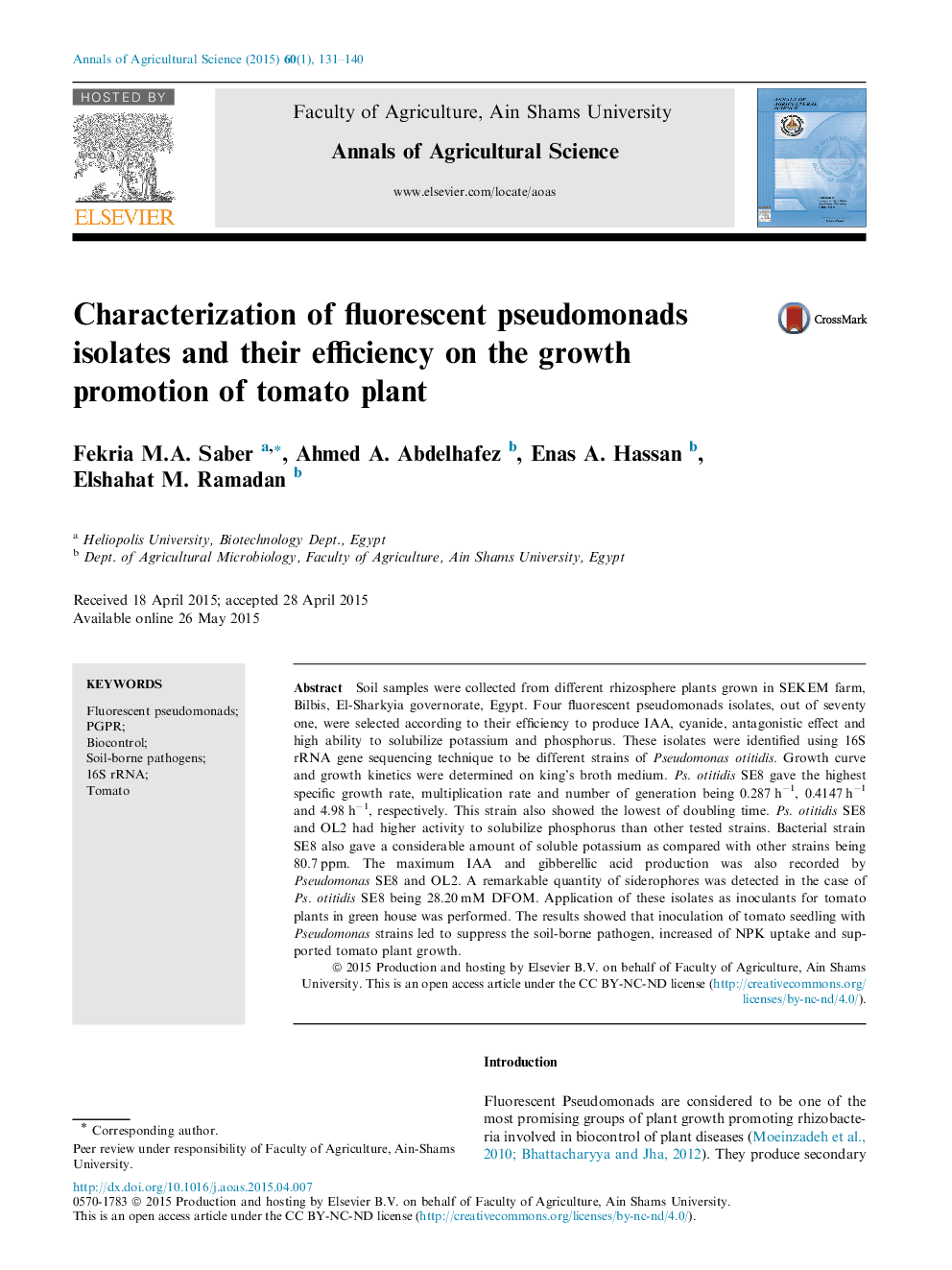| Article ID | Journal | Published Year | Pages | File Type |
|---|---|---|---|---|
| 4492870 | Annals of Agricultural Sciences | 2015 | 10 Pages |
Soil samples were collected from different rhizosphere plants grown in SEKEM farm, Bilbis, El-Sharkyia governorate, Egypt. Four fluorescent pseudomonads isolates, out of seventy one, were selected according to their efficiency to produce IAA, cyanide, antagonistic effect and high ability to solubilize potassium and phosphorus. These isolates were identified using 16S rRNA gene sequencing technique to be different strains of Pseudomonas otitidis. Growth curve and growth kinetics were determined on king’s broth medium. Ps. otitidis SE8 gave the highest specific growth rate, multiplication rate and number of generation being 0.287 h−1, 0.4147 h−1 and 4.98 h−1, respectively. This strain also showed the lowest of doubling time. Ps. otitidis SE8 and OL2 had higher activity to solubilize phosphorus than other tested strains. Bacterial strain SE8 also gave a considerable amount of soluble potassium as compared with other strains being 80.7 ppm. The maximum IAA and gibberellic acid production was also recorded by Pseudomonas SE8 and OL2. A remarkable quantity of siderophores was detected in the case of Ps. otitidis SE8 being 28.20 mM DFOM. Application of these isolates as inoculants for tomato plants in green house was performed. The results showed that inoculation of tomato seedling with Pseudomonas strains led to suppress the soil-borne pathogen, increased of NPK uptake and supported tomato plant growth.
